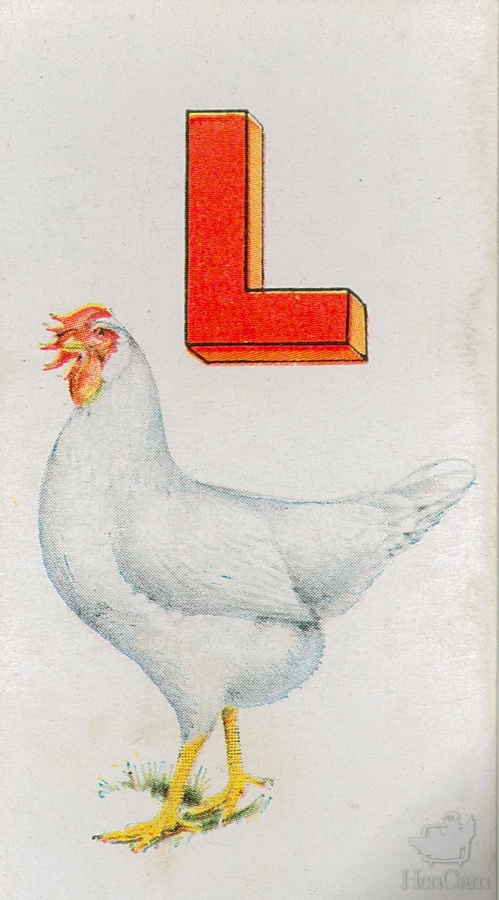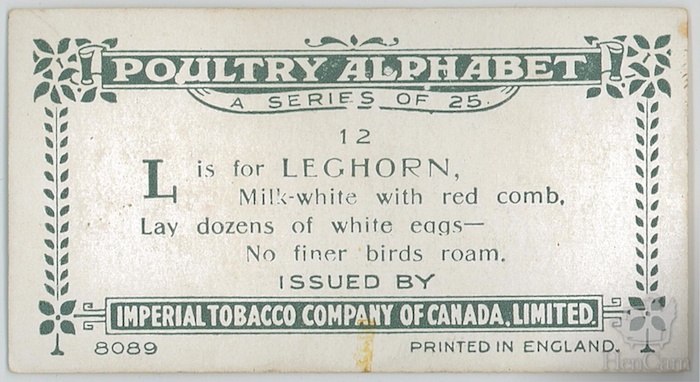You know how much I value and adore my Leghorn, Twiggy! Sassy, curious, flighty and a flier, this is a hen that can get into trouble, but also one that goes through her day with energy and purpose. She’s not an aggressive hen, rather she gets what she wants via speed, not bullying. Twiggy began laying when she was less than five months old, and, here we are a year and a half later, and she hasn’t stopped yet.
Twiggy is my first full-sized Leghorn (Snowball and the others were bantams) so she could be an exceptional individual, but judging by the poem, she fits the standard.
Tell me about your Leghorns. Does anyone keep brown Leghorns? Do they have the same temperament as the white? Extra points if you comment in rhyme!



I currently to do not have any white leghorns, unfortunately they are not long lived.
I do and have raised brown leghorns. I currently have a silver leghorn.
Both variations have a very similar temperament as the white. However, brown and silver have a more subdued color and pattern thus do not stand out like white leghorns in a mixed flock and thus don’t seem as flighty.
They are not the prolific layers as the whites in my experience.
Interesting.
I have two bantam brown leghorns (Peaches and Barley) and they too are so speedy. They are active, chatty (well squeaky really), very inquisitive and friendly. I had them from six weeks old and they are now seven months old. Both started laying at six months and both lay every other day (on the same day). They also like to jump on my back if I bend over and ride with me to the nearest perch where they step across on to it.
They are flighty and I have a huge walk in run with an enclosed top or they would be off. They are endlessly entertaining and adorable and also inseparable. They are also very pretty. As you can probably tell I just love them to bits.
The bantam leghorns have the best personalities. So glad that you have such a delightful pair.
My first Leghorn is a lovely,lively, layer named Lavender…………..she lays almost every day and I want a few more, I like production ….I am looking into a brown variety, to replace the aging hens in my flock,( though I do have a Plymouth Bard Rock who will be 4 in April and is still laying well.)…
In my experience, some of those barred rocks can be very long lived.
We have not had white leghorns but we have had brown ones before. We also have had brown leghorn- americauna cross before. They are such beautiful birds with their puffy cheek feathers and olive colored eggs.They are also very friendly.
We use to have about 10 leghorns in our flock of about 35 hens. We had them in with Australorps and Orpingtons and a few Wyandottes. Ours were pretty calm. I think having them in with some docile and calm breeds help. Don’t get me wrong tho, they were active and very quick. And fly very well. But they wouldn’t go nuts on you if you entered the hen house. We had 2 brown leghorns and they were flightier than the white ones. My uncle who has nothing but White Leghorns, go crazy when you enter the hen house. Even tho they have a very large run they don’t go out there much. They usually stay inside the hen house all day. Which I find strange but they are were raised in a brooder house with no outside run so I think they just never got use to going out. He also has no rooster with them either. And really doesn’t spend a lot of time with them. I handled mine from day one. Sat in the coop with them as chicks, talked to them, picked them up as much as possible. I think that really helps with their temperament. Leghorns are a fascinating breed and my favorite.
Tell me Terry, do you call them ‘leg-horns’ or ‘leg-erns’?
“horns”. How do you pronounce it?
hmm I called them a “leghorn once and was quickly corrected and told it was “Legern”
i just looked up how to pronounce “H ” in Italian and the “H” is a silent letter, so I guess it would be pronounced “Legorn”
i’ll bet that’s a regional way of speaking. i would say LEGurns. almost an “a” soundin the leg part. this is s.w.. wisconsin-speak.